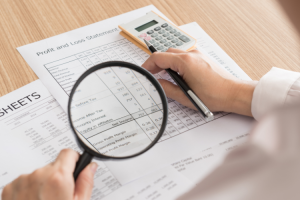Introduction:
Depreciation is more than just an accounting entry—it significantly influences the structure and interpretation of income statements. In this enlightening guide, Dr. Rachel Adams, a renowned accounting scholar, unveils how depreciation shapes income statements. Tailored for business owners, financial analysts, and Depreciation Shapes the Income Statement accounting professionals, this exploration provides invaluable insights into understanding and analyzing the impact of depreciation on financial performance.
1. Fundamentals of Depreciation Accounting:
Begin by understanding the fundamentals of depreciation accounting. Dr. Adams explains depreciation methods, such as straight-line and accelerated methods, and their implications for income statement presentation.
2. Allocation of Depreciation Expenses:

Explore how depreciation expenses are allocated in the income statement. Dr. Adams discusses how depreciation is categorized as an operating expense, impacting gross profit and operating income.
3. Impact on Gross Profit Margin:
Dive deeper into how depreciation affects gross profit margin. Dr. Adams elucidates how depreciation reduces gross profit, influencing profitability ratios and overall financial performance.
4. Effect on Operating Income:
Understand the effect of depreciation on operating income. Dr. Adams highlights how depreciation directly impacts operating income, providing insights into cost management and operational efficiency.
5. Influence on Net Income and Earnings Per Share (EPS):
Examine depreciation’s influence on net income and earnings per share (EPS). Dr. Adams discusses how depreciation reduces net income, affecting EPS calculations and shareholder value.
6. Interpretation of Income Statement Ratios:
Uncover how depreciation shapes the interpretation of income statement ratios. Dr. Adams explores the impact of depreciation on key ratios, such as return on assets (ROA) and net profit margin, guiding financial analysis.
7. Long-Term Strategic Considerations:
Explore long-term strategic considerations related to depreciation. Dr. Adams discusses how understanding depreciation allows businesses to make informed decisions regarding asset management, investment planning, and financial forecasting.
8. Financial Reporting Transparency and Compliance:
Ensure transparency and compliance in financial reporting related to depreciation. Dr. Adams provides guidance on accurately disclosing depreciation expenses in income statements and adhering to accounting standards.
Conclusion:
As you unveil the numbers behind depreciation’s impact on the income statement, remember that clarity leads to informed decision-making. With Dr. Rachel Adams’s expert guidance and comprehensive insights, you possess the knowledge and tools to understand and interpret income statements effectively, driving financial success.
Key Points Summary Table:
| Point | Description |
|---|---|
| Fundamentals of Depreciation Accounting | Principles and methods of depreciation accounting |
| Allocation of Depreciation Expenses | Categorization as operating expenses and impact on gross profit |
| Impact on Gross Profit Margin | Influence on profitability ratios and financial performance |
| Effect on Operating Income | Direct impact on operating income and cost management |
| Influence on Net Income and EPS | Reduction of net income and implications for shareholder value |
| Interpretation of Income Statement Ratios | Analysis of key financial ratios and performance metrics |
| Long-Term Strategic Considerations | Implications for asset management and financial planning |
| Financial Reporting Transparency and Compliance | Accuracy in disclosure and adherence to accounting standards |
By leveraging the insights provided by Dr. Rachel Adams, PhD, you can gain a comprehensive understanding of how depreciation shapes income statements, enhance financial analysis capabilities, and make informed decisions to drive business success. Remember, effectively interpreting income statements is crucial for assessing financial performance and guiding strategic decision-making.










